Landing on Titan: Pictures from Huygens Probe on Saturn Moon
Touchdown on Titan
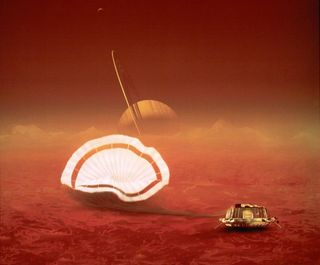
On Jan. 14, 2005, after a seven-year journey through the Solar System on board the Cassini spacecraft, the European Space Agency's Huygens probe successfully descended through the atmosphere of Titan, Saturn’s largest moon.
Next Stop, Titan: Huygens Lander Leaves Cassini
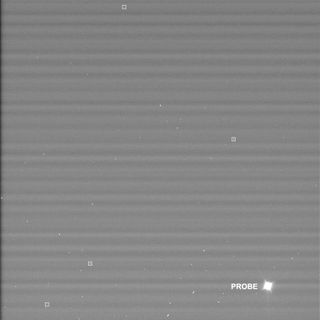
The European Space Agency's Huygens probe appears shining as it coasts away from Cassini in this image taken on Dec. 26, 2004, just two days after the probe successfully detached from the Cassini spacecraft. Huygens landed on Titan on Jan. 14, 2005.
Farewell, Huygens: Cassini View
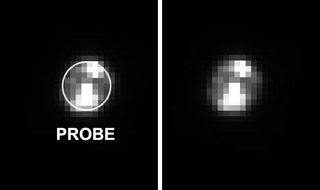
ESA's Huygens Probe appears shining as it coasts away from Cassini in this close-up of an image taken on 26 December 2004, after it successfully detached from the Cassini spacecraft.
Huygens Parachuting on Titan
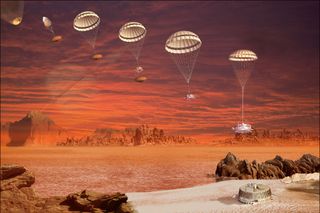
This image is an artist's impression of the descent and landing sequence followed by ESA's Huygens probe that landed on Titan. The Jan. 14, 2005 landing was the culmination of a 22-year process of planning, organizing and cooperation between ESA and NASA.
Huygens Sees Channels on Titan

This is one of the first raw images returned by the ESA Huygens probe during its successful descent onto Titan on Jan. 14, 2005. It was taken from an altitude of 16.2 kilometers with a resolution of approximately 40 meters per pixel. It apparently shows short, stubby drainage channels leading to a 'shoreline' or boundary of some sort.
Huygens Falling to Titan
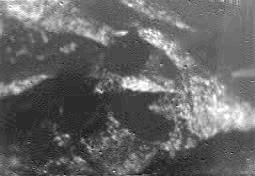
This is one of the first raw images returned by the ESA Huygens probe during its successful descent onto Titan on Jan. 14, 2005. It was taken at an altitude of 8 kilometers with a resolution of 20 meters per pixel. It shows what could be the landing site, with shorelines and boundaries between raised ground and flooded plains.
Huygens Mosaic of Titan from Above
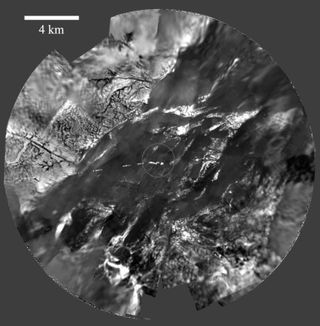
Images from the ESA Huygens probe's DISR instrument taken between 17 and 8 km were assembled to produce this panoramic mosaic. The probe groundtrack is indicated as points; north is up. Channels cut through the brighter terrain, implying precipitation (likely as methane ‘rain’) and possibly springs.
Get the Space.com Newsletter
Breaking space news, the latest updates on rocket launches, skywatching events and more!
Fish-Eye Titan
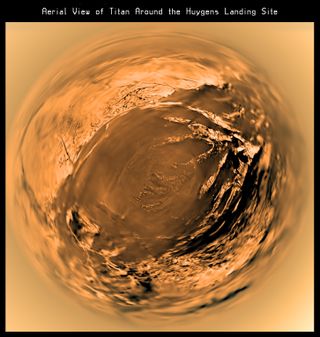
This distorted fish-eye projection shows a view of Titan’s surface from 5 kilometres above the surface. It is built with images taken during descent by the Descent Imager/Spectral Radiometer (DISR) on board ESA’s Huygens mission, on Jan. 14, 2005.
Titan From Above
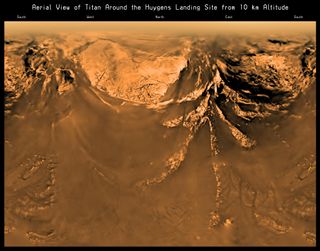
This image is a Mercator projection of an Huygens’s view of Titan, taken at 10 kilometres altitude (a Mercator projection is kind of map which keeps the cardinal directions intact – they cross at right angles – but distort surface areas). The image was taken during descent by the Descent Imager/Spectral Radiometer (DISR) on board the probe, on Jan. 14, 2005.
Titan in Color From Huygens Probe

This image was returned on Jan. 14, 2005, by ESA's Huygens probe during its successful descent to land on Titan. This is the color view, following processing to add reflection spectra data, gives a better indication of the actual color of the surface. Initially thought to be rocks or ice blocks, they are more pebble-sized.
Titan by Huygens: A Giant Leap
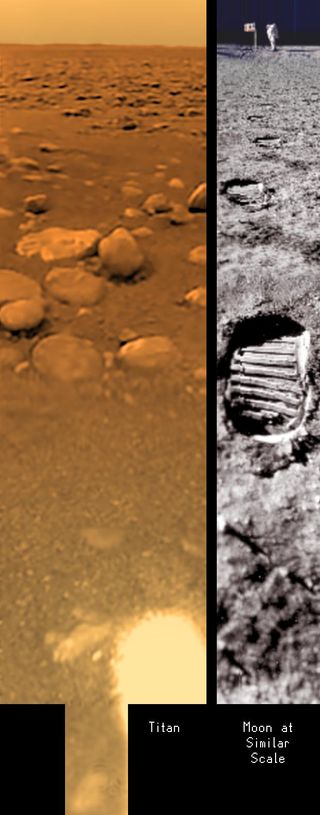
This composite view of Titan’s surface is built with images taken on 14 January 2005 by the Descent Imager/Spectral Radiometer (DISR) on board ESA’s Huygens mission, after touch-down. The composite is compared with a similarly scaled picture taken on the Moon’s surface. Objects near the centre of the picture are roughly the size of a man’s foot, while objects at the horizon are a fraction of a man’s height.
Join our Space Forums to keep talking space on the latest missions, night sky and more! And if you have a news tip, correction or comment, let us know at: community@space.com.

Space.com is the premier source of space exploration, innovation and astronomy news, chronicling (and celebrating) humanity's ongoing expansion across the final frontier. Originally founded in 1999, Space.com is, and always has been, the passion of writers and editors who are space fans and also trained journalists. Our current news team consists of Editor-in-Chief Tariq Malik; Editor Hanneke Weitering, Senior Space Writer Mike Wall; Senior Writer Meghan Bartels; Senior Writer Chelsea Gohd, Senior Writer Tereza Pultarova and Staff Writer Alexander Cox, focusing on e-commerce. Senior Producer Steve Spaleta oversees our space videos, with Diana Whitcroft as our Social Media Editor.
